This St. John's artist is restoring war memorial statues to their original elegance
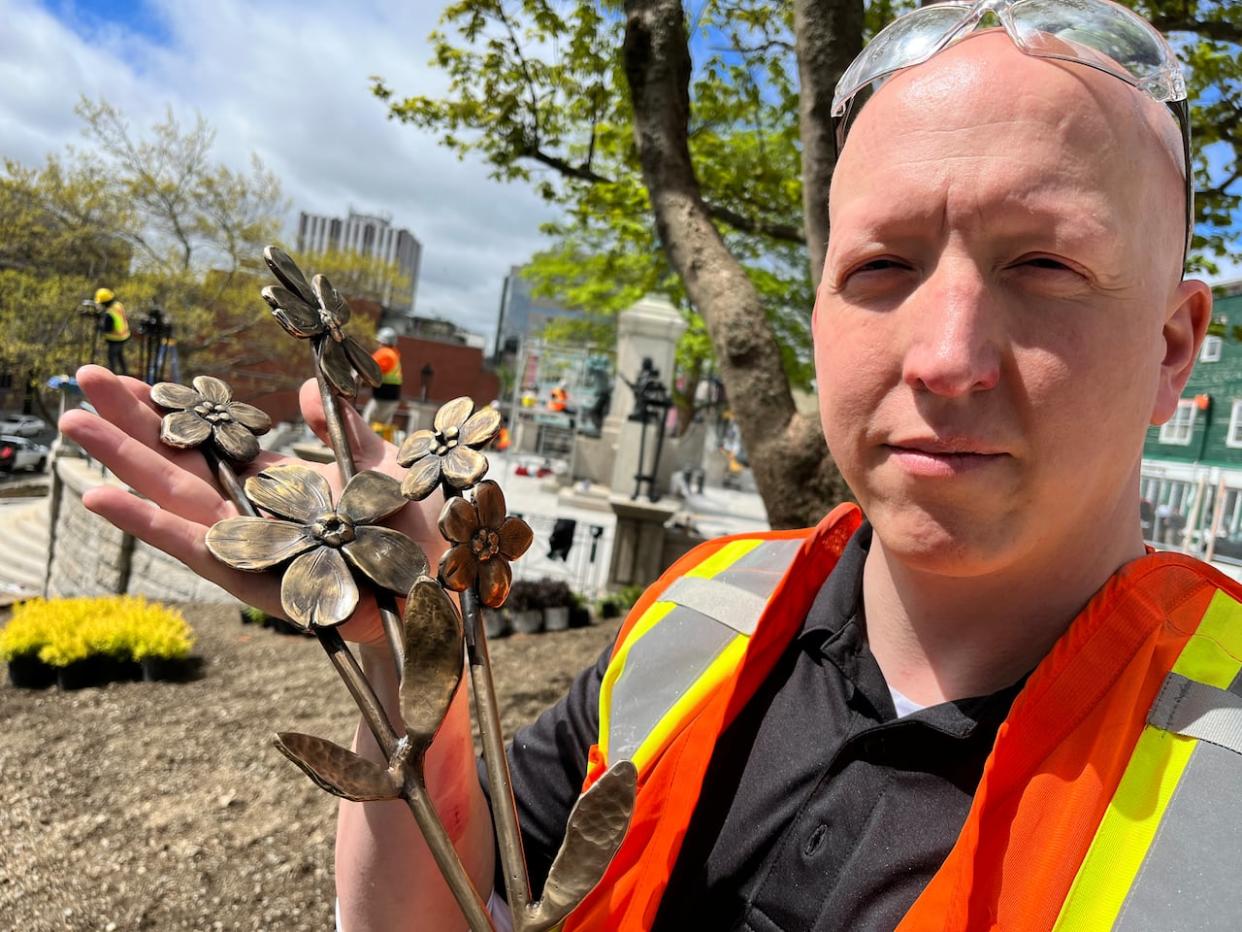
Morgan MacDonald is restoring the bronze statues that dominate the Newfoundland National War Memorial to their original elegance, and this well-known St. John's artist says he's honoured to have such a privilege.
"This is a historic event for Newfoundland. It's only going to happen once and to be this fortunate to witness this is an incredible honour," MacDonald said on Thursday as he stood in the shadow of the century old cenotaph that overlooks St. John's harbour.
The war memorial property is undergoing an expensive refresh ahead of the centennial anniversary of this sacred site on July 1. And thousands of people, including a member of the British Royal Family and other dignitaries, are expected to attend Memorial Day ceremonies on that day as the remains of an unknown Royal Newfoundland Regiment soldier who died in France during the First World War is interred inside a new granite burial chamber at the base of the memorial.
On Thursday, no less than 30 construction workers were buzzing about the property, installing fresh grass, plants, fencing, lighting and sidewalks.
And perched on a scaffold was Morgan MacDonald, wearing a hard hat and eye protection, and holding a blow torch in one hand and a brush in another.
"It's from an era bygone. This is a quality of workmanship you don't see anymore," MacDonald said. "These sculptors were well-accomplished and trained at national academies. These were experts in their craft."
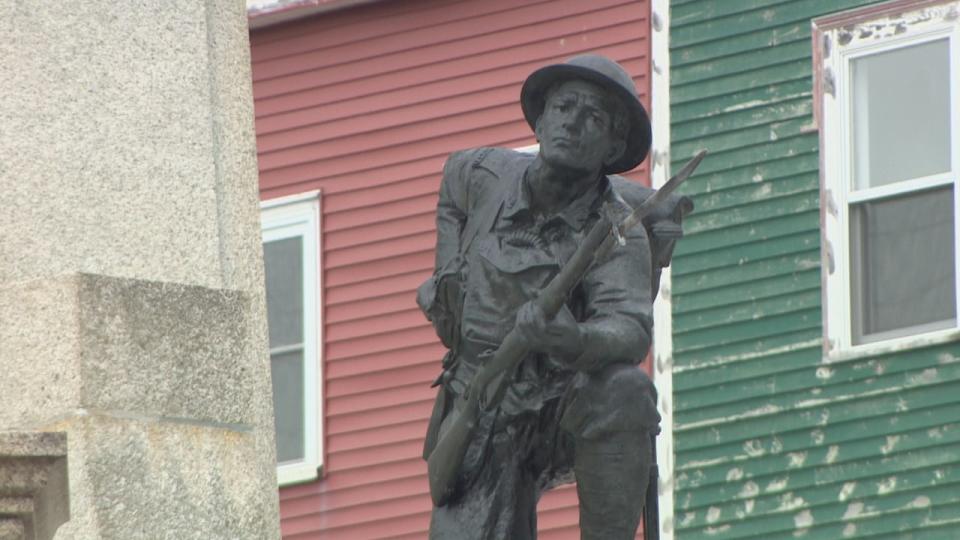
The statue of a Royal Newfoundland Regiment soldier at the National War Memorial in St. John's has been restored to its original elegance. (Darryl Murphy/CBC)
The memorial consists of five bronze statues — four that represent Newfoundland's involvement in the First World War, and a female allegorical figure known as the Victory statue — affixed to a large granite base.
But a century of exposure to the elements have altered the appearance of the statues, leaving them covered in a greenish tint, the result of a process called oxidation.
So MacDonald has been contracted by the provincial government to remove the thin layer that has formed on the copper, known as patina, and apply a chemical treatment that restores the statues to their original metallic brown colour.
He's also applying a protective coating to preserve the bronze.
As of Thursday morning, the statue representing a soldier of the Royal Newfoundland Regiment was restored, and MacDonald was focusing his efforts on the statues that represent merchant mariners and loggers who served with the forestry companies in Scotland.
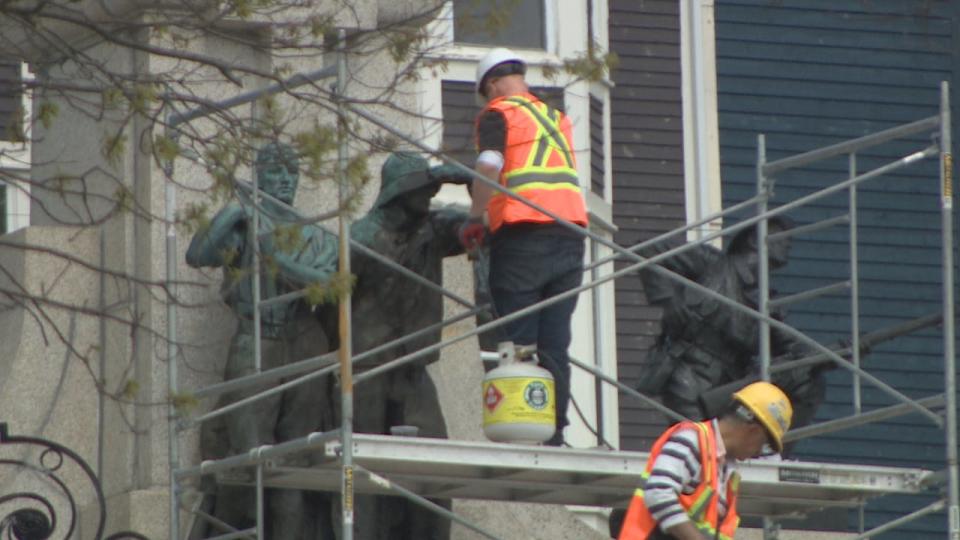
Artist Morgan MacDonald is seen here on Thursday morning, refurbishing the statues that represent the merchant marine and the forestry companies that served during the First World War. (Darryl Murphy/CBC)
By next week, he hopes to have all the statues, including the Royal Naval Reserve statue and the Victory statue, refurbished.
"I think the big thing people will notice is the difference in the colour," said MacDonald.
WATCH | The CBC's Terry Roberts talks to artist Morgan MacDonald on his role in upgrading the War Memorial:
When he's done, the statues will look just as they did on July 1, 1924, when they were unveilled by Douglas Haig, the famous general who led the British army during much of the First World War. Photographs from that day show thousands of people gathered around the war memorial, with many standing on rooftops and others hanging out of windows.
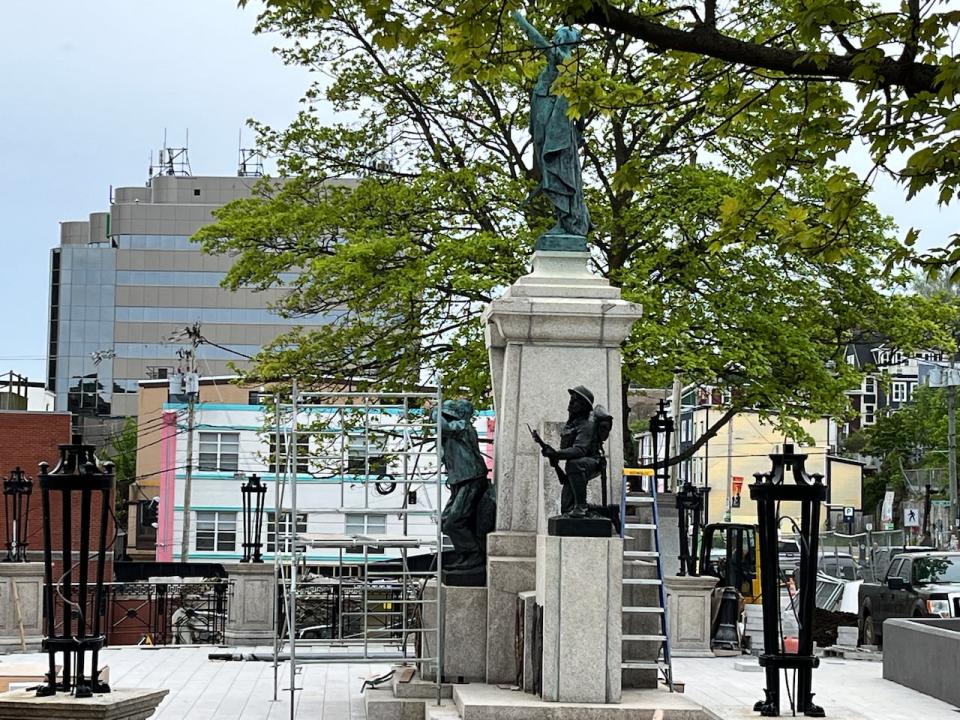
The Newfoundland National War Memorial in St. John's was unveilled in the summer of 1924, nearly six years following the armistice that ended the First World War. It's now undergoing a major refresh ahead of a centennial event on July 1, which is Memorial Day in Newfoundland and Labrador. (Terry Roberts/CBC)
The unveilling by Field Marshall Haig took place just six years after the armistice that ended the First World War, which saw 12,000 Newfoundlanders serve in various capacities, and more than 1,600 lose their lives.
"A lot of care and attention has to be taken to ensure that these (statues) are kept to their original intent … when they were first unveiled," he said.
MacDonald is known nationally for his sculpting work, but this project is a true labour of love, and it's personal. That's because his great-grandfather, Joe Babstock, was a veteran of the First World War who survived several battles, and German captivity.
And as he spends hour after hour with each statue, MacDonald is deepening his attachment to the original artists, English sculptors Ferdinand Victor Blundstone and Gilbert Bayes.
"You're getting a sense of a deep connection with the people that created these statues originally in 1923. You're seeing the workmanship. You're getting intimate with the piece and seeing it up close in a way that not a lot of people get to do," he said.
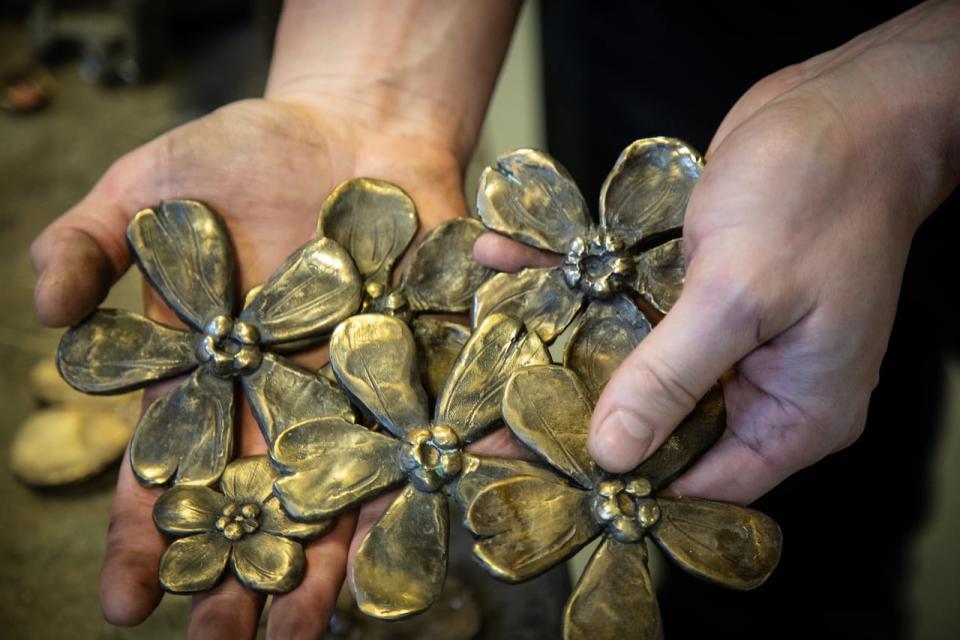
The new tomb of the unknown soldier at the National War Memorial in St. John's will be decorated with a bouquet of bronze forget-me-not flowers created by sculptor Morgan MacDonald. (Morgan MacDonald)
And from his unique vantage point, MacDonald can see details that casual observers will not notice, like the regimental badge on the shoulder and the letters in the helmet. This attention to detail, said MacDonald, is proof that the sculptors took great pride in their work.
"It's very humbling to me. I look up to this kind of craftsmanship," he said.
Following the First World War, the forget-me-not flower became a symbol of remembrance for the Royal Newfoundland Regiment. A bouquet of bronze forget-me-nots will decorate the cover of the new tomb when the unknown soldier is interred on July 1.
That bouquet is being made by Morgan MacDonald.
Download our free CBC News app to sign up for push alerts for CBC Newfoundland and Labrador. Click here to visit our landing page.


